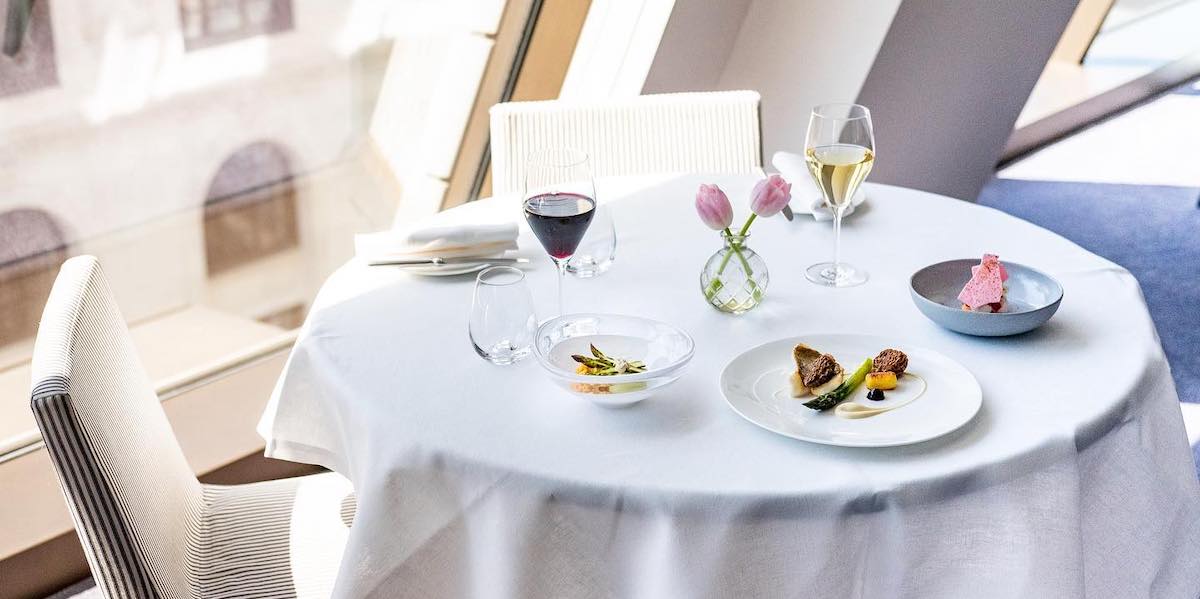Bethan Putnam interviews Andrew Pierre Hart on his new exhibition, Bio-Data Flows and Other Rhythms – A Local Story. The exhibition runs until 7 July 2024 at Whitechapel Gallery.
Q. Tell us a bit about the exhibition.
A. ‘Bio-Data Flows and Other Rhythms – A Local Story’ is a multi-layered show that explores ideas and experiences whilst in the Whitechapel area. Drawing on a conversation with a local restaurant worker most of the ideas were generated from this conversation. Painting, mural, sculpture and video and sound all work together to create an installation. The show thinks through information and stats and reconfigures them into an installation that speaks of the process of thinking that is the show – an example of this in the painting Bio-Data Flows – Tower Hamlets Ward. The painting utilises population statistics, flags and the map of Whitechapel as the structure and abstracted visual for the painting.
Q. Why did you choose Whitechapel as the focus of the exhibition?
A. As I stepped out of the station to meet the director Gilane Tawadros to discuss the show, the initial rhythm and tempo of Whitechapel High St, with its big city skyscrapers, modernist architecture and local feel, instantly inspired me as my research sparked by the conversation, the histories began to unfold and when learning that Whitechapel was the 1st place a lot of travelling, sea-faring and emigrated people lived, worked and built lives. This was the first place people of Caribbean and African heritage would have lived in the UK.
Q. Please could you walk us through the process of creating the soundscape that accompanies the visual artwork?
A. The soundscape/soundtrack from the film is an exploration of sound and my particular interest in experimental sound and recording practices. From the sound of the train that runs through the underbelly of Whitechapel Gallery to the quiet noise of streets at night, the soundscape attempts to take you through a journey of sounds and rhythms that spill out as I move around Whitechapel. I have also composed electronic rhythmic works to create the intensity of the hustle and bustle as well as a nod to alternative music scenes that have been part of a wider music culture that took over, like the graffiti in the streets of the surrounding area. Acoustic instruments, sax by blue cloud and a clarinet solo by Shabaka offer meditative times and odes to London streets.
Q. What would you like for visitors to take away from the exhibition?
A. I had a recent conversation around the structure of language and the way it guides our thinking and the way we engage. It’s more about what the viewers bring also. The show is now open for a week and to brilliant moments. 1) Two small families were sat together on the ground, drawing the mural peacefully, enjoying the time together. 2) Three generations of a family were sitting watching the film. These moments that people bring to the work are important to me and also to the ethos of the gallery. I want people to know that they are welcome to explore their local gallery.
Q. Did you have a favourite part of the process when creating the exhibition?
A. Researching Whitechapel through lived experience of walking, taking, hanging out, late night walks to explore the different tempos, light and architecture, this was very valuable; having time to explore but also to have a wide-range of research tools and putting those at play – the ears, eyes and memory as data-capture interests me particularly as I teach. The making of the mural was a meditative time spent with two other artists/students Sondliwe and Afoditi – three days of Jazz fm, eating together, conversation and focus time on drawing the ebbs and flows between quiet, conversation, laughing and supporting was and is as much the art for the viewer as the art for us.
Q. What challenges have you faced while creating the exhibition, and how did you overcome them?
A. Time was of the essence – good scheduling, timetabling and organisation from us all helped to actually have a smooth and well-timed install. I travelled a bit last year for shows all organised before I was commissioned, I had to work around and with that, the video was produced and the texts written whilst abroad, this all had to be factored in – in a way travelling at the same time as working on the show, I consider still part of the show, you can see this in clips that show a wider relation to the work – visual connections in Barbados, Taiwan, Lagos and Italy.
Q. Which other artists inspire you?
A. I have a staple of artists who never put a foot wrong with the work they do and even when they shift it’s just me having to catch up and I find this particularly with one of my favourites Chris Ofili and the list starts there:
Hurvin Anderson
Kerry James Marshall
Alvaro Barrington
Peter Doig
Frank Bowling
Oscar Murillo
Simeon Barclay
Jennifer Packer
Sonia Boyce
Barbara Walker
Torkwase Dyson
Alma Thomas
Helen Frankenthaler
Larry Achiampong
Christian Marclay
Q. What’s in the pipeline for the rest of 2024?
A. I will be in a group show at Lisson Gallery and Gallery 1957, both in London.
Also in talks with a couple of potential shows.
A podcast coming with San Clemente with Grace Bailey – it’s a very warm conversation on all sorts of topics – think a good conversation of tea or coffee (although I drink neither).
An interview with Francesca Gavin on NTS radio at the end of March.
And finally, alongside the screening event at Whitechapel, there will be a durational sound event at least six hours where Remer Cier and I will explore sound that relates to the area and more.
For the latest headlines from the City of London and beyond, follow City Matters on Twitter, Instagram and LinkedIn.







